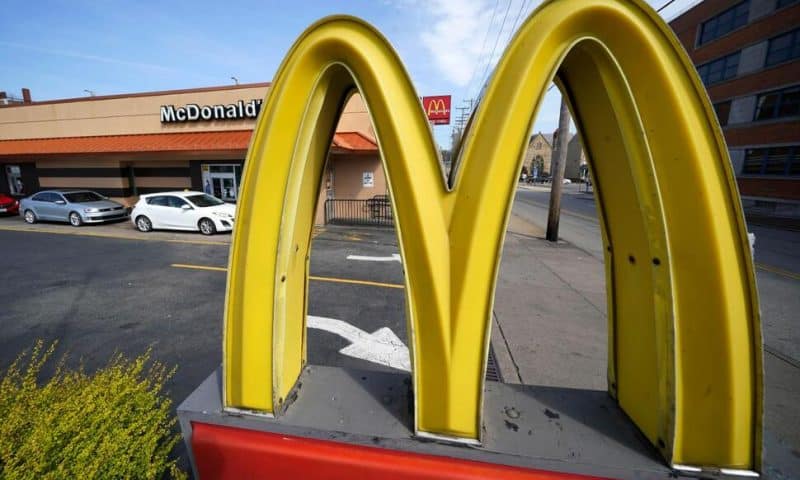McDonald’s is grinning thanks to Grimace after a marketing campaign to celebrate the “birthday” of its big purple mascot went viral and contributed to surprisingly strong second quarter sales
McDonald’s is grinning thanks to Grimace after a marketing campaign to celebrate the “birthday” of its big purple mascot went viral and contributed to surprisingly strong second quarter sales.
Global same-store sales, or sales at stores open at least a year, rose nearly 12% in the April-June period. That handily beat Wall Street’s forecast of a 9.4% increase, according to analysts polled by FactSet.
Some of those gains may fade a bit in the second half of this year. The price increases that have helped fuel McDonald’s sales in recent quarters will moderate as inflation comes down, Chief Financial Officer Ian Borden said Thursday in a conference call with investors.
“We recognize that we’re operating in a challenging macro environment, where costs remain elevated, customers discretionary spending is limited and industry traffic is pressured,” Borden said.
The Grimace campaign, which featured a limited-time purple milkshake, took on a life of its own after fans posted videos of themselves drinking the milkshake and then ending up on the ground in a messy pool of purple, or having some sort of seemingly paranormal experience. One TikTok video showing a teen drinking one in his car and then disappearing in a milkshake explosion. That video garnered more than 5 million “likes.”
“Grimace has been everywhere the past few months. All over the news, and more than 3 billion views on TikTok,” CEO Chris Kempczinski said. “This viral phenomenon is yet another proof point of the power of marketing at McDonald’s today.”
But in other markets, McDonald’s tightened its belt to lure inflation-weary customers. Germany’s McSmart value menu, introduced earlier this year, proved so successful that the company recently unveiled a similar menu in the United Kingdom.
In the U.S., consumers remain largely resilient, Kempczinski said. McDonald’s is gaining a share of higher-income customers who are trading down from sit-down restaurants, he said. Customers with incomes of $45,000 or lower are spending less on each order but are coming in more often, he said.
“There is certainly concern with the US consumer that shows up in their sentiment but our business and our value positioning in the market has put us into a good position to be able to weather that and continue to drive the share gains that you’re seeing,” Kempczinski said.
Revenue rose 14% to $6.5 billion, the Chicago chain said Thursday. That was ahead of analyst expectations for $6.3 billion.
Same-store sales in the U.S. more than doubled, rising 10.3% in the quarter compared with a 3.7% rise a year earlier.
Net income nearly doubled to $2.3 billion for the quarter. Excluding one-time items, the company earned $3.17 per share, which beat analysts forecasts of $2.78.
Among those one-time items was an $18 million charge for restructuring costs. McDonald’s laid off corporate workers in early April in an effort to speed up innovation and decision-making.
McDonald’s and other restaurants have had to balance their own rising costs and how much they can lean on customers to help cover them, but Kempczinsk said in a prepared statement that the company is continuing to invest in the brand and get customers what they want.
That includes connecting with customers through the McDonald’s app.
“On the digital front, McDonald’s digital investments have made its app much easier to use and have increased convenience for the consumer,” said Neil Saunders, managing director of GlobalData. “This has paid big dividends in terms of increasing the number of both impulse and planned meal purchases.”
Shares climbed more than 1.5% Thursday.

